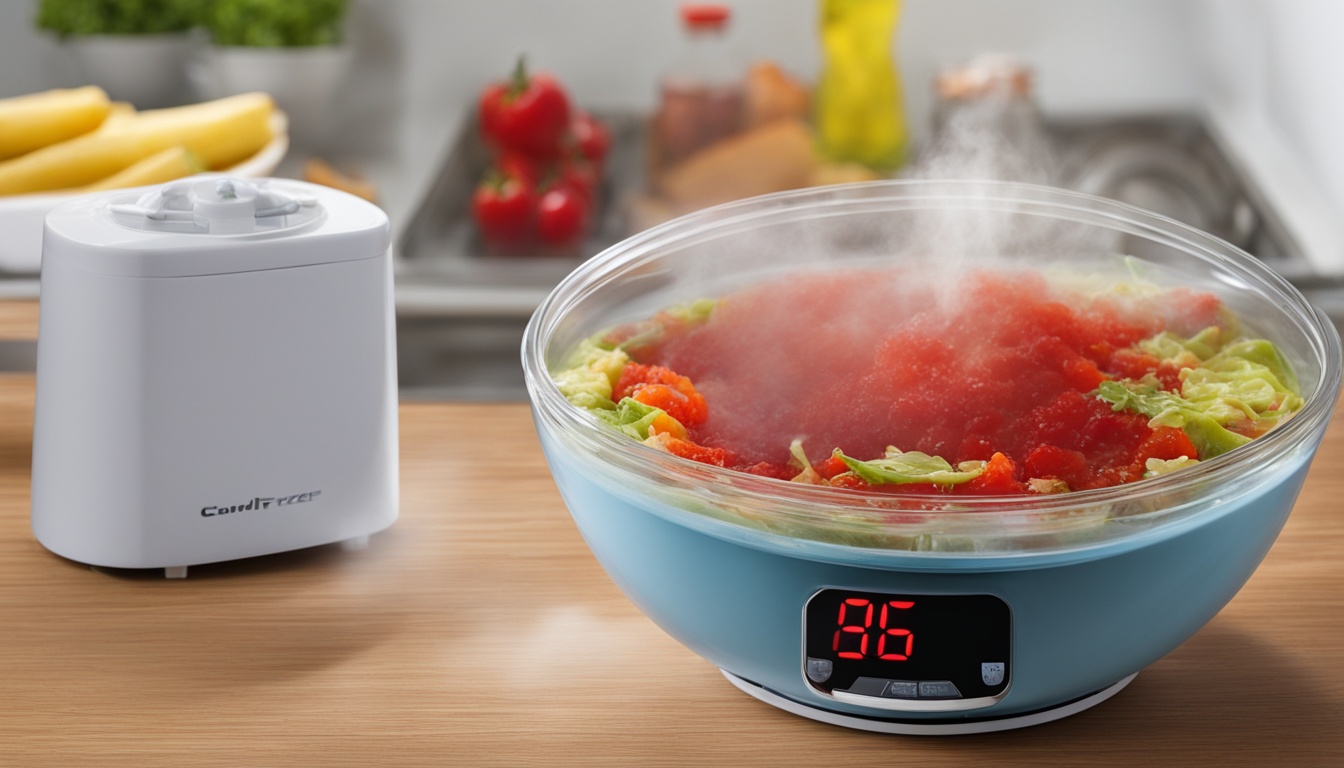Have you ever wondered what the quickest way to freeze and defrost your food is? Are you tired of waiting hours for your dinner ingredients to thaw? We have the answers you’ve been searching for!
When it comes to freezing food, time is of the essence. The longer your food takes to freeze, the more likely it is to lose its quality and taste. So, what is the best, fastest way to freeze and defrost food efficiently at home?
One key technique is to freeze your food flat. By maximizing the surface area to volume ratio, you can speed up the freezing process and ensure that your food freezes evenly. But how exactly do you do that? Let us guide you through the process step by step.
If you have malleable solids or semisolids like ground meat or chili, transfer them to a zipper-lock bag, remove as much air as possible, and flatten the bag. For liquids, pour them into a zipper-lock bag, remove the air, and lay the bag flat. Not only will this method freeze your food quickly, but it will also allow for organized storage in the freezer.
But wait, there’s more! In the next sections, we’ll share additional tips for rapidly freezing food with efficiency and effective techniques for safe defrosting at home. So, if you’re ready to save time and enjoy better-quality frozen meals, keep reading!
Tips for Rapidly Freezing Food with Efficiency
When it comes to freezing food, time is of the essence. The sooner you freeze your food, the better its quality will be when thawed. If you’re looking to freeze food even more rapidly and efficiently, we’ve got you covered. Here are some of the best tips for freezing and defrosting food quickly and easily:
- Use a blast chiller or liquid nitrogen: If you want to freeze your food in minutes, consider using a blast chiller or liquid nitrogen. These methods rapidly lower the temperature, preventing the formation of large ice crystals and preserving the freshness and flavor of the food.
- Arrange larger food items in a single layer: For larger food items like steaks or chicken pieces, it’s important to arrange them in a single layer before freezing. This allows for faster and more even freezing. Remove as much air as possible from the packaging to prevent freezer burn and maintain the food’s quality.
- Utilize the water displacement method or a vacuum sealer: Removing air from the packaging is crucial for efficient freezing. You can use the water displacement method by placing the food in a zipper-lock bag and slowly submerging it in water, allowing the water to push out the air. Alternatively, invest in a vacuum sealer to remove air effectively.
- Opt for freezer-safe containers or bags: To prevent freezer burn and maintain the quality of your frozen food, always use airtight containers or freezer bags labeled as freezer-safe. These containers and bags are designed to protect your food from moisture loss and prevent unwanted odors from permeating.
- Thaw food using the refrigerator or aluminum trays: When it’s time to thaw your frozen food, the easiest and safest method is to transfer it to the refrigerator the night before. This gradual thawing process ensures food safety and helps retain its texture and flavor. Alternatively, you can speed up the thawing process by using aluminum trays, which conduct heat more efficiently.
By following these efficient freezer defrosting techniques, you can ensure that your frozen food remains fresh and delicious, ready to be enjoyed whenever you need it.
Effective Techniques for Safe Defrosting at Home
To safely thaw frozen food at home, there are several methods you can use. The fastest way to freeze defrost food at home is by thawing it in the refrigerator. This method allows for gradual thawing while keeping the food at a safe temperature. Simply transfer the frozen food from the freezer to the refrigerator and let it thaw overnight or for a few hours, depending on the size and thickness of the food.
If you’re in a hurry and need to thaw your food quickly, the efficient freezer defrosting techniques involve using the water technique. Submerge the frozen food in a bowl of cold water and change the water every 30 minutes to ensure it stays cold. This method is particularly useful for meats or seafood that need to be cooked right away. It’s important to remember that the water should be cold and not hot to avoid any risk of bacterial growth.
When defrosting your food, it’s crucial to avoid refreezing thawed food, as doing so can compromise its quality and safety. Instead, thaw only the amount of food you need and consume it within a few days. This helps maintain the freshness and flavor of the food. By following these efficient freezer defrosting techniques, you can enjoy safe and delicious thawed meals in no time.
